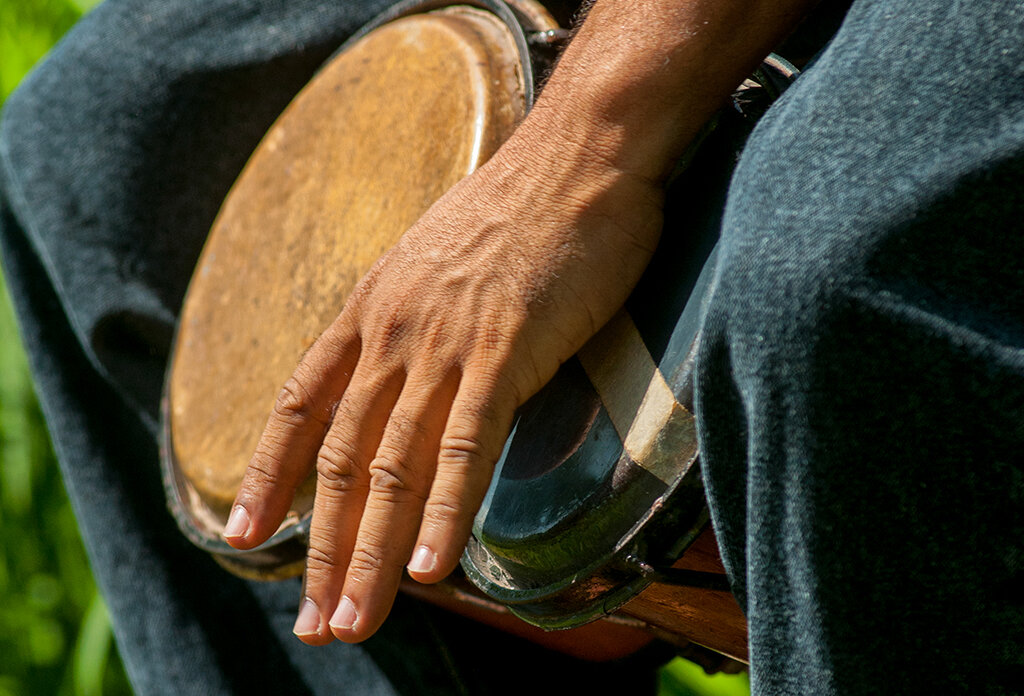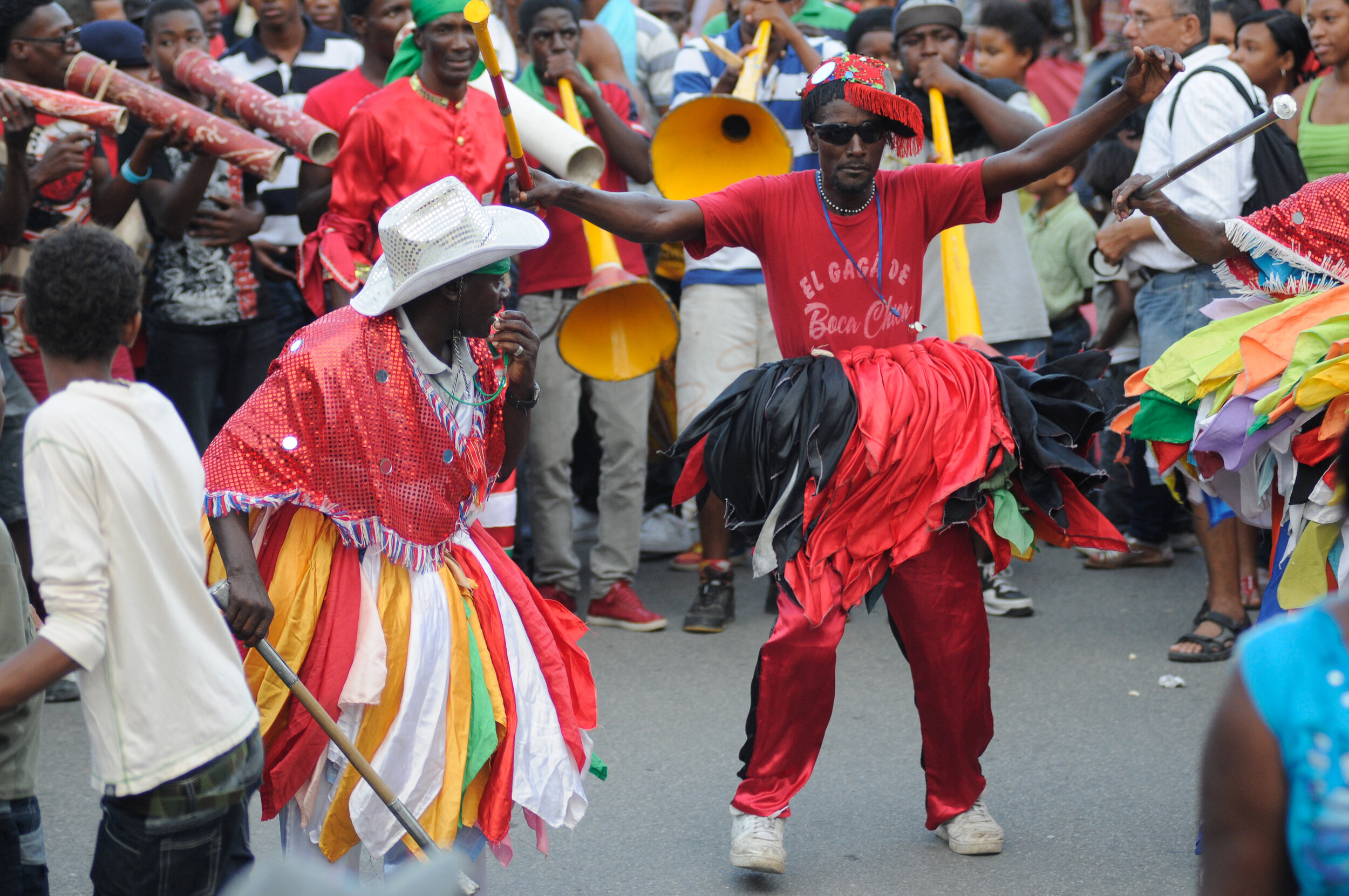Sarandunga de Baní. Photo credit - Mariano Hernández
I had the pleasure of meeting Mauro Ferreiro recently at a record launch I was spinning at in The BBE Store. We chatted about his new release that was in the shop, what records I was playing and in particular, the overlooked rhythms of his homeland in the Dominican Republic. I suggested to him if nobody will write about it then he should and we would publish it. Two days later, here it is in all it’s glory! A wonderfully fresh listen to sounds we hadn’t heard before and the stories around it. Over to you Mauro!
‘In the words of renowned national poet Pedro Mir, "there is an island in the world... simply light, like a bat’s wing leaning on the breeze, simply bright, like the trace of a kiss on an elderly maiden or daylight on the roof tiles". Soaked of earth and humid sun, these beautiful words make reference to the forgotten rhythms of the Dominican Republic.
Known for being the first colonial settlement of the New World, the capital Santo Domingo is the oldest modern city of the Americas. Its place in the continent as the centre of Spanish colonial rule allowed for a process known as "mestizaje", or the mixing of European settlers (usually lower class merchants or sailors) with the indigenous Taíno populations and Africans brought to the island as a product of the atlantic slave trade.
This cultural syncretism is one of the main driving forces behind the distinctly pumping, brash sounds that make up most popular twentieth-century Dominican styles such as Merengue, Bachata, and Perico Ripiao' (shown below).
These popular genres take their influence from older, more powerful styles of Afro-Dominican music, which can be found throughout the colourful tapestries of the Dominican countryside.
Palos o Atabales
Palos (middle) with güira (left) and tambora (right). Photo credit - Mariano Hernández
This style of music is present across the entire island and is mainly associated with the Dominican popular religion Las 21 Divisiones, with each geographic variation being defined by its own distinct toques (rhythms) and saints of patronage. On occasions, it is not linked to a specific religious practice and can be otherwise denominated as a secular style. The Palos of the eastern region of the island are the most popular and are characterised by three large drums, one palo mayor, one chivita, and one alcahuete, as well as two panderos, a variation of the tambourine. The distinct metallic, scraping sound found in Palos and most Dominican music is reproduced by the güira, which is a unique metal idiophone autochthonous to the Dominican Republic.
Salves
Balsié drum. Photo credit - Mariano Hernández
Usually played in the central-south region of the island, this playing has its own toques such as the musungo, a technique which consists of rubbing the drum head with the fingers to produce a friction sound that sounds like a bassline. Salves are usually played with a balsié, mongó, güira and pandero, as well as with vocalists who will replicate lead melodies from the main singer. Other variations of the style will use a tambora, such as the recording shown below.
Congos
Congo players of the Cofradía del Espíritu Santo. Photo credit - Patrimonio Cultural Dominicano en la Red
Known as one of the oldest musical styles in the island, its origin can be traced all the way back to the 17th century in Villa Mella, an outskirt of Santo Domingo. The music, which is played by the members of the Cofradía del Espíritu Santo (Brotherhood of the Holy Spirit), celebrates the catholic image of the Holy Spirit and is also played in many other forms in adjacent communities. Its main instruments are usually one congo mayor, conguito, and canoita (a variation of the clave), with multiple maracas depending on the occasion.
Sarandunga
This tradition was born and is practiced exclusively in the central-south region of Baní (pictured in header), and utilises a slightly more complex rhythm. It is played by the religious brotherhood that celebrates the patronage of catholic St. John The Baptist, with three celebrations taking place during the month of June. It is played with three small-headed drums, two smaller alcahuetes and one tambor mayor, respectively, as well as with the distinctive güira sound.
Gagá
Gagá de San Luís, 2012. Photo credit- Espíritu Cimarrón
A tradition inherited from our neighbouring nation Haïti, Gagá is played during celebrations of Semana Santa (Holy Week) as a communal parade, and uses a variety of instruments entertained by musicians and attendees alike. It is the preferred style of music for festive processions and even the yearly carnival which celebrates national independence day. The instruments utilised are two small drums, the catalié and tambú, chapita (cowbell), chachá (shaker), and fututos, which are long wind instruments that produce a very low frequency sound when blown. There are a multitude of quantities due to the festive nature of the style.
As a Dominican, these sounds embody many personal sentiments regarding music. Afro-Dominican music has been a well-kept secret due to the fact that it is considered taboo by the majority of Dominican society, regardless of social class. There are dozens of variations of these styles that are not listed here, and the fact that music from the Dominican Republic has not been documented extensively like countries such as Cuba, Colombia and Perú is reason enough to give the country a thorough listen, as there is much more to discover than what meets the eye.’
Mauro Ferreiro is a songwriter, musician, electronic producer, and freelance creative from Santo Domingo, Dominican Republic. He is one half of experimental jazz duo Error Subcutáneo and is currently based in London.
BUY / LISTEN - https://errorsubcutaneo.bandcamp.com/album/error-subcut-neo





